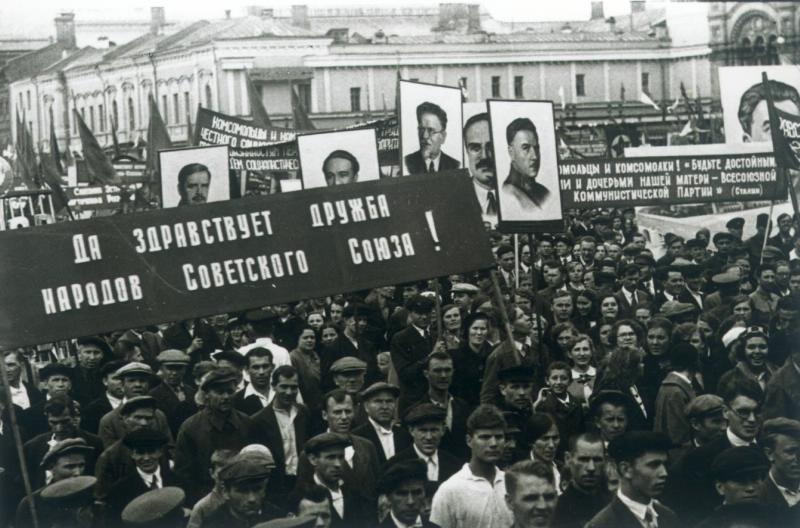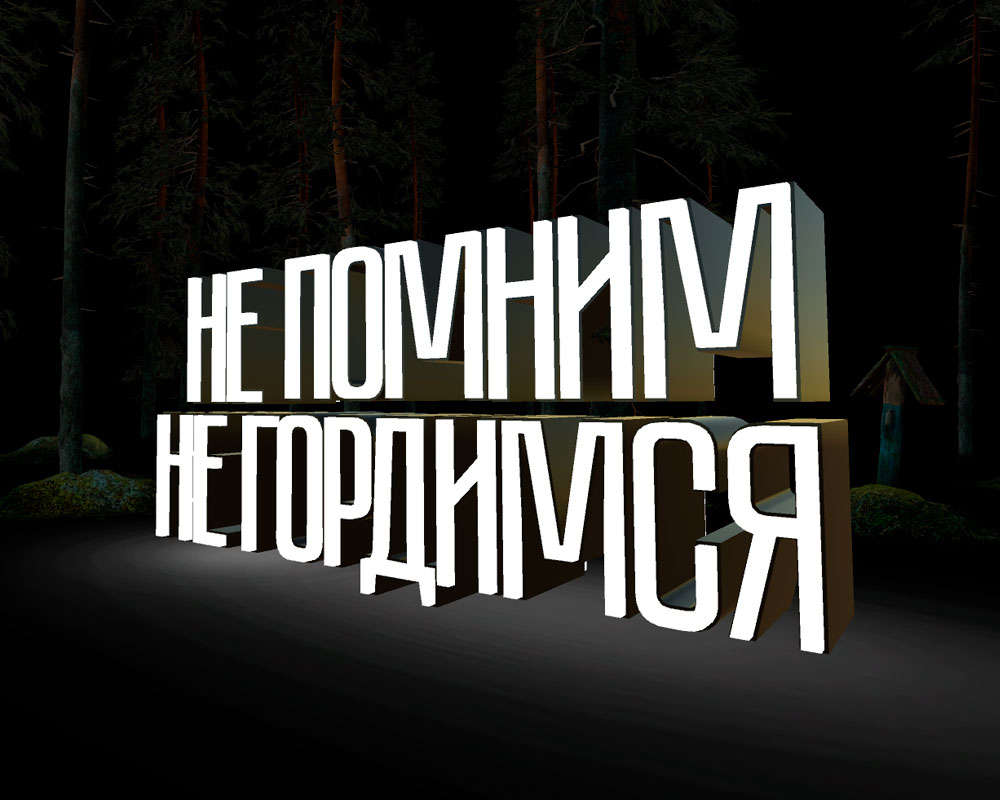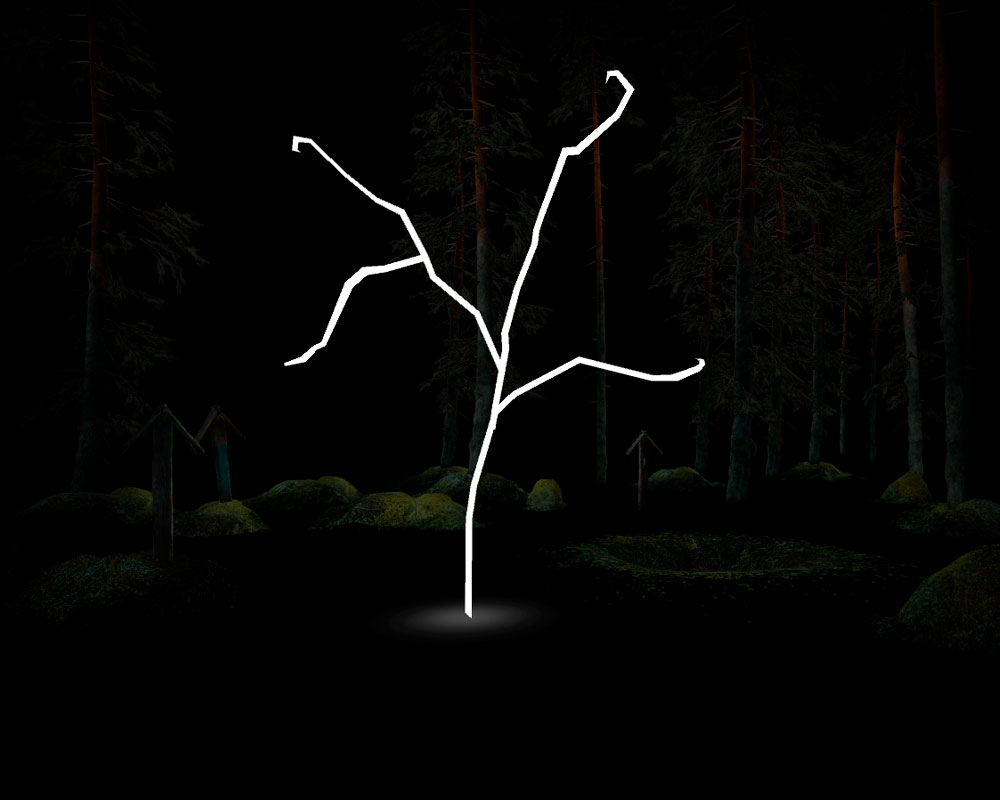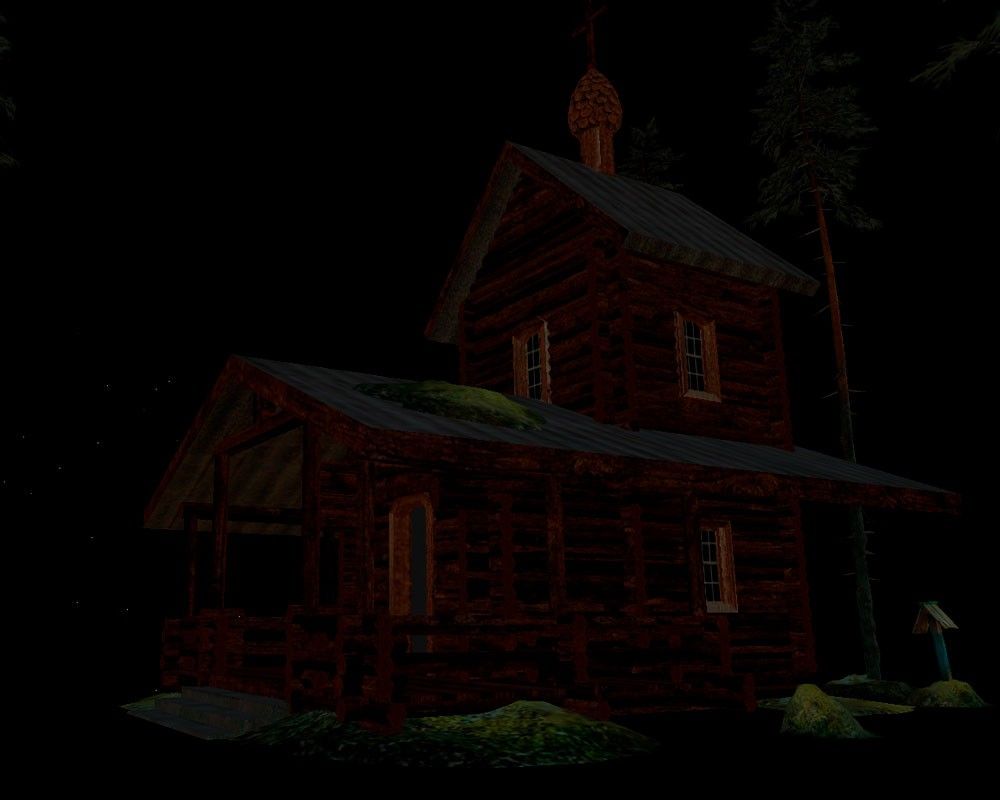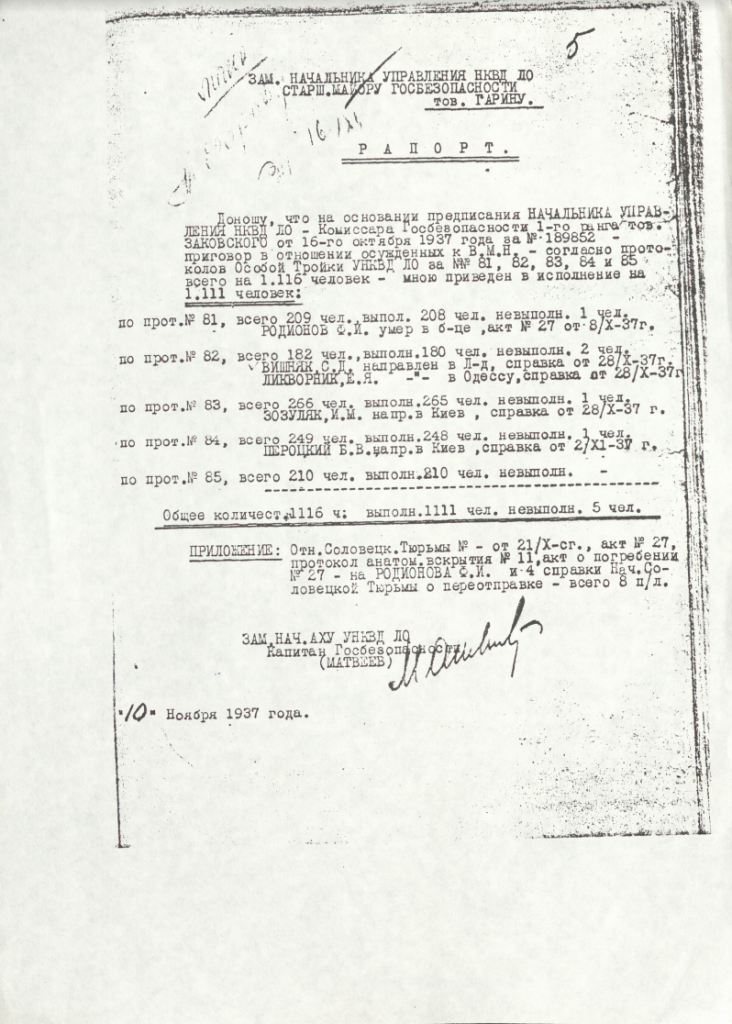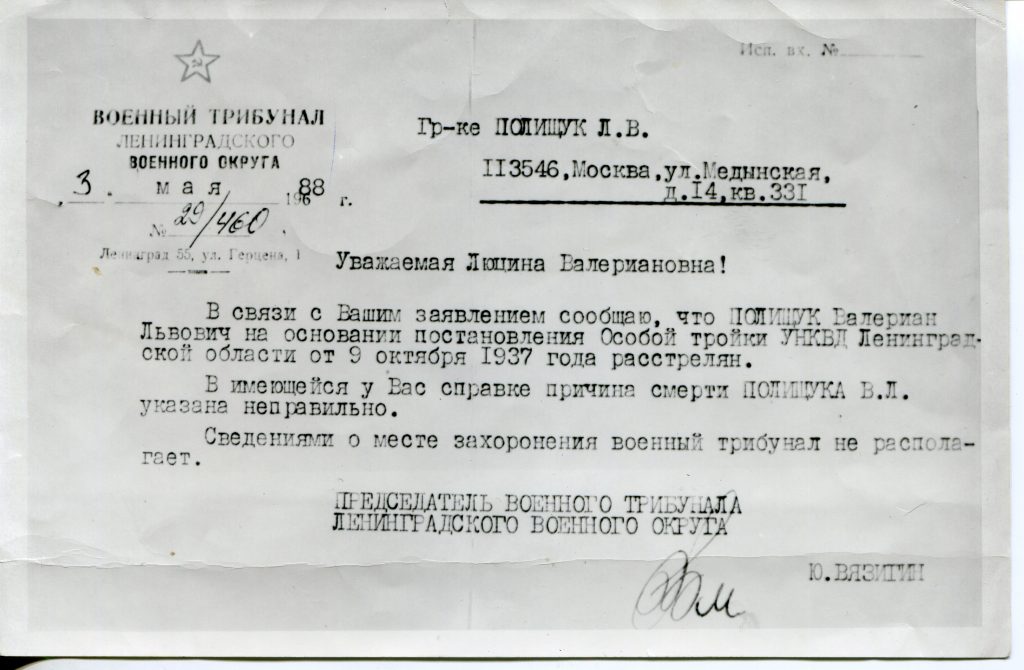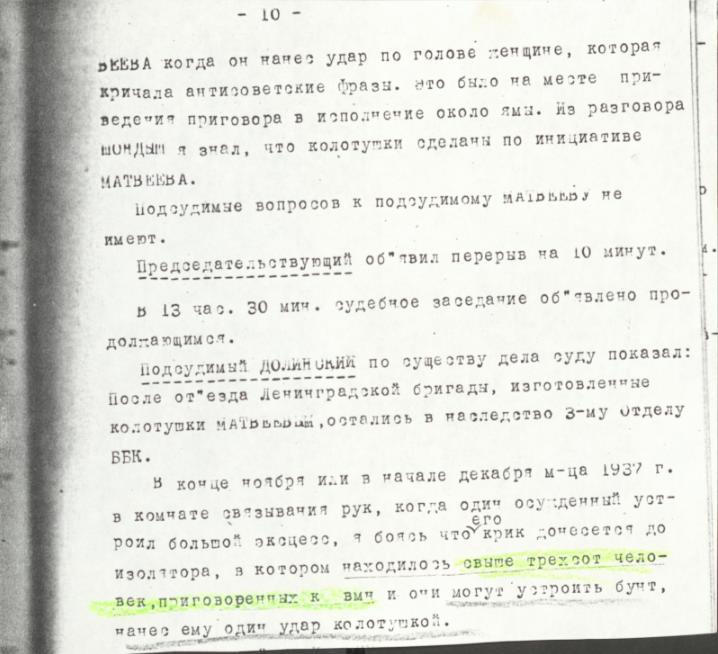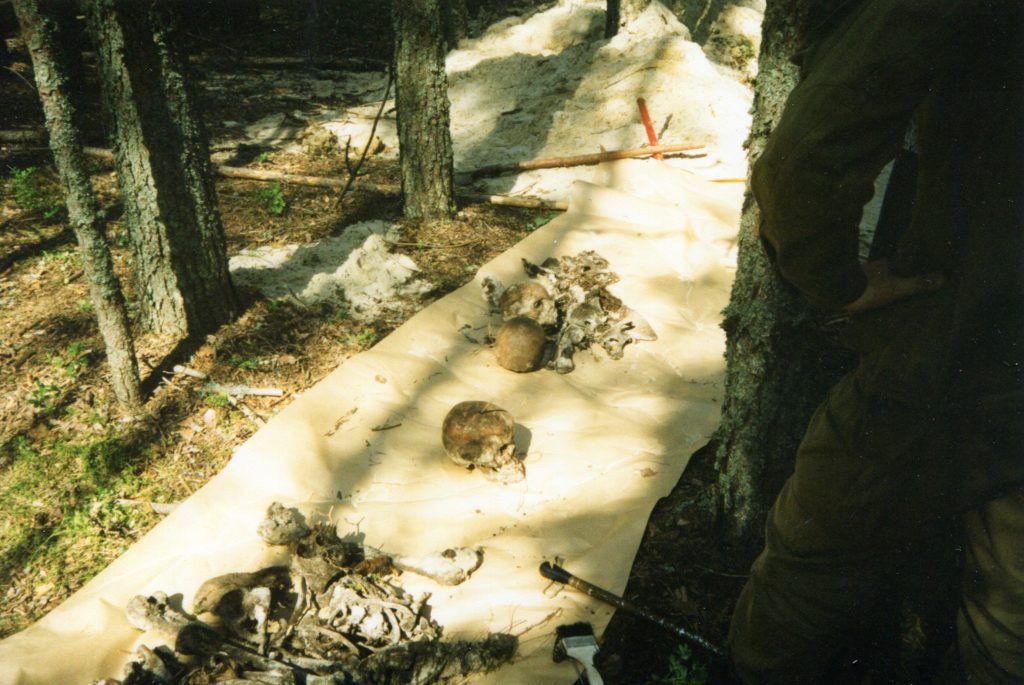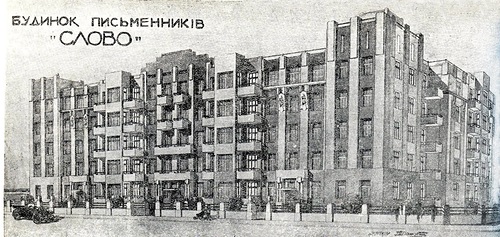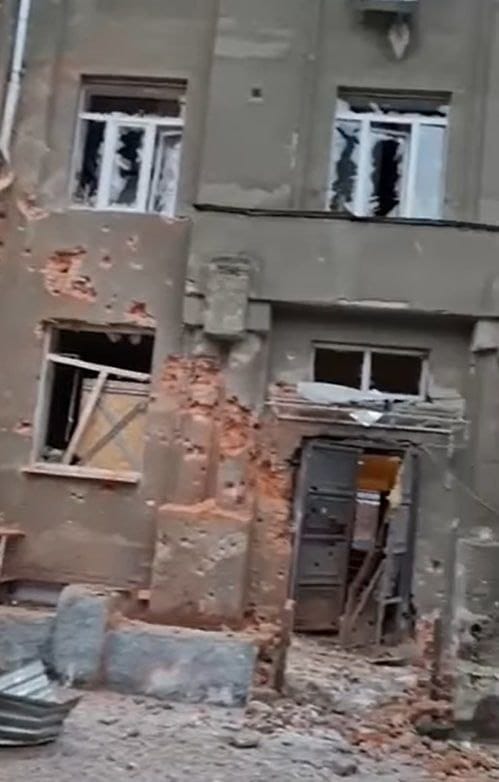Lost transit
The itinerary features documentary accounts by relatives of the victims of Sandormoh, recorded in 1999 at the Day of Remembrance – as well as the memories of researcher Irina Fliege, recorded in 2020.
It is also the first time that documents from the investigation file of M.R. Matveev, a Leningrad NKVD officer, A.F. Shondysh, I.A. Bondarenko and others from the NKVD of Karelia are presented publicly in this volume. – where details of the treatment of convicts in the Medvezhegorsk detention centre and subsequent shootings in Sandormoh are set out.
To get to the route, look for the gate with the sign “Lost transit”.

Monastery

S.M. Prokudin-Gorsky. Common view of Solovetsky monastery (from Babiy island) 1916.
In 1920 a camp for political prisoners was located in the Solovetsky Monastery. As a result of a fire in 1923 the main cathedral lost its domes and crosses, instead the towers were nailed up with planks. In 1997, the 500 ruble banknote displayed Solovki without the domes and crosses. The camp on the banknote was replaced by the monastery only 13 years later, in 2010.

500 rubles coin, 1997. Source
In 1937, during the Big Terror, quotas were lowered here, as well as in other places. The administration had to select about 1000 people for the trial by the Troika, which sentenced these people to death by firing squad. Then the quota was increased, a total of 1,825 people were selected and sentenced. The largest stage – 1111 – left for the mainland in October.
The ship

“Gleb Bokiy” steamship Source
Solovetsky prisoners were transported on the steamer Gleb Bokyi, named after one of the first Chekists who had been in charge of terror under Lenin. Bokiy was considered the curator of Solovki and was coincidentally shot just a week after the execution of the main part of Solovki prisoners. The steamer had by then changed its name to S.L.O.N., then to Nikolai Yezhov. Yezhov, who signed the decree beginning the Big Terror, was also shot, three years later.
Disappearance
From the moment of departure, the trail of the prisoners was lost. There were legends that the barge with them had been sunk, or that they had been sent to Siberia. The relatives were unable to find out anything. Enquiries were answered with the words “not listed”. It was a typical formulation for Solovki. At other places the answer was “10 years without the right for correspondence”. Like “not listed”, this always meant execution.
Train

Veniamin Iofe. Source: Iofe foundation archive
In 1989 Veniamin Iofe and Irina Fliege, the founders of Memorial in St Petersburg, travelled to Karelia for the First Days of Remembrance and the opening of the Solovetsky Camp Museum. It was very small, but its appearance was symbolically important. Relatives of Solovetsky prisoners were also going there. They got acquainted on the train, told each other their stories. It turned out that the dates of death on the certificates were almost the same for everyone, within one week
Archives
After this, it took Iofe and Flige several years to find other details of this mass shooting. They constantly monitored the publications and in 1996 they found a reference to a folder with the materials of the Karelian execution trials in one of the new books. They requested the file from the NKVD’s archive in Karelia. The folder was given out grudgingly, they did not allow much copying, copies had to be cut up, and only scraps – the so-called “noodles” – could be taken away.
The trial of the executioners

From the testimony of one of the perpetrators of the shootings, N.N. Mironov. Source: Minutes of the court session of the Military Tribunal of the USSR NKVD troops of the Leningrad District. 24-26.05.1939. Archive of the Federal Security Service of the Republic of Karelia. Investigative Cases Fund. C.№11602. Vol.4. The sheet of the case is not fixed
The trial of the executioners, the transcript of which was in the file, was of a pharisaical nature. They were certainly not tried for shootings, which would have been impossible within the same firing squad system – only for abuse of power. It is likely that these officers had simply crossed someone’s path. The trial revealed the monstrous cruelty of the executioners in their treatment of the prisoners: they were beaten, strangled, bayoneted, carried fifty people in a truck, put in pits and shot
Finding
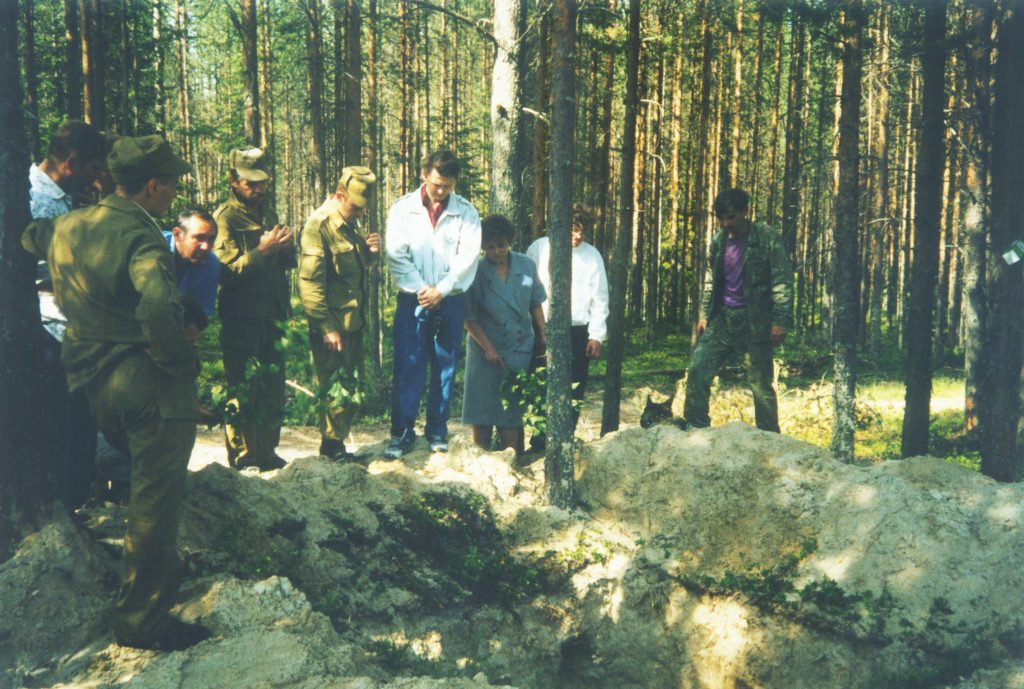
Yuri Dmitriev and witnesses of the excavations in the days of the Sandormoh discovery. July 2, 1997. Source: Iofe Foundation archive

Sandormoh forest. July 2, 1997. Source: Iofe Foundation archive
There was also specific information in the documents – a geographical point. One of the shooters mentioned the distance from Medvezhegorsk to the shooting range – 16 kilometres and the name of the nearby village. The researchers understood which road they were talking about. They soon set out to find it. Their expedition was joined by Yuri Dmitriev, who for his part had been studying the fates of repressed inhabitants of Karelia, as well as prisoners of local camps and political exiles. A couple of hours after Iofe, Fliege and Dmitriev arrived at the site, Dmitriev discovered subsidence in the soil and realised that these were execution pits. They began digging and found many remains, all with shot skulls.




